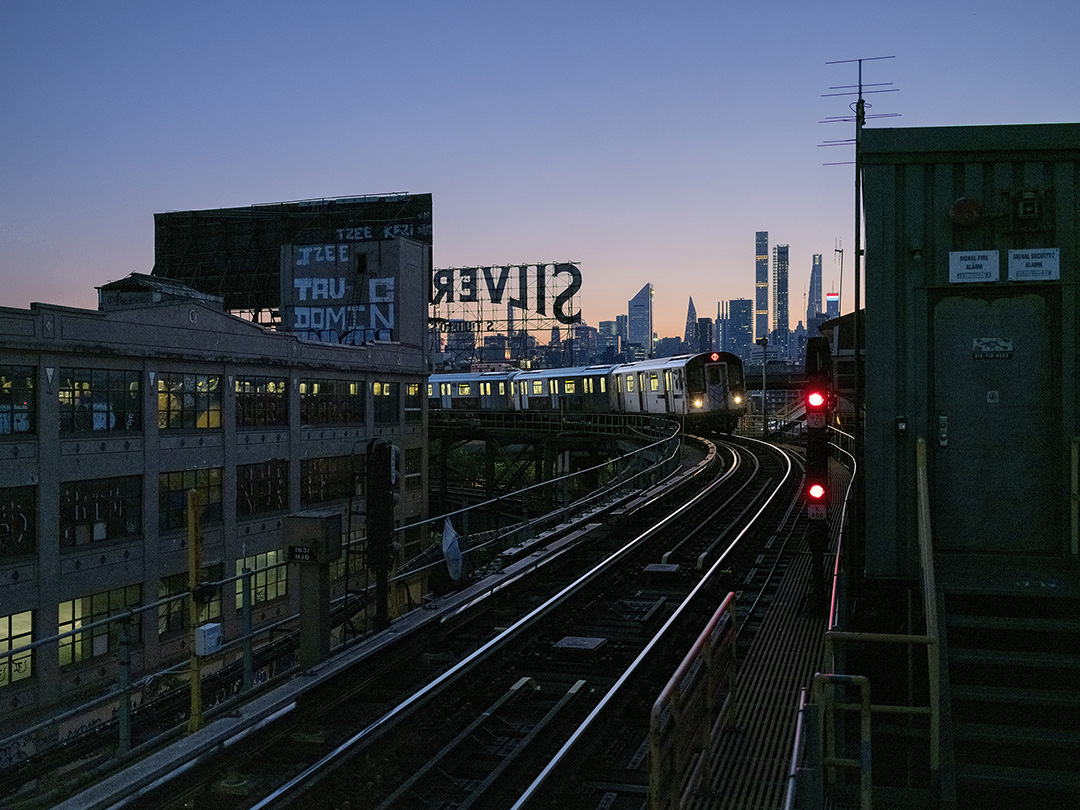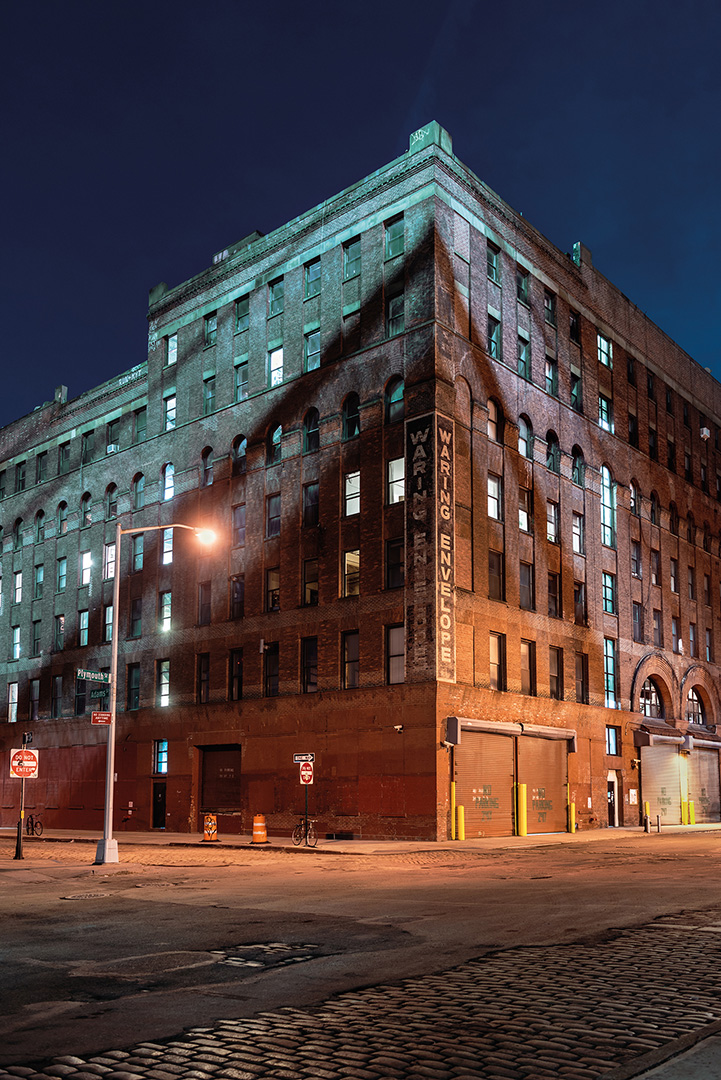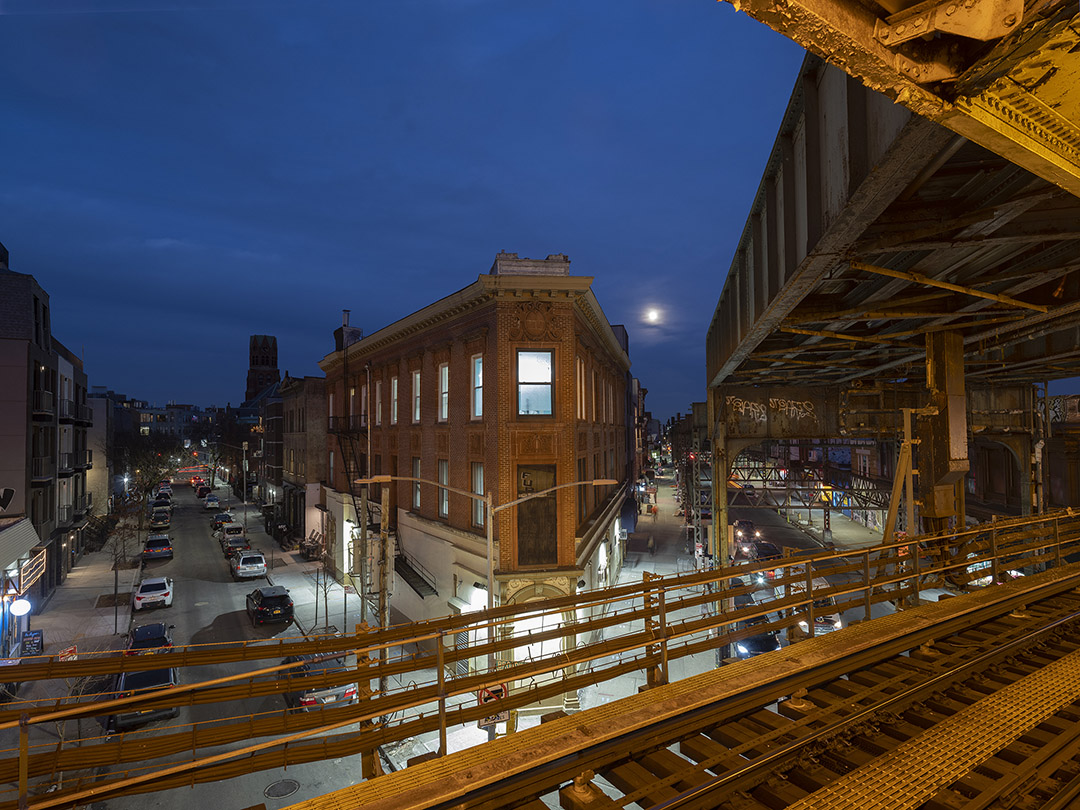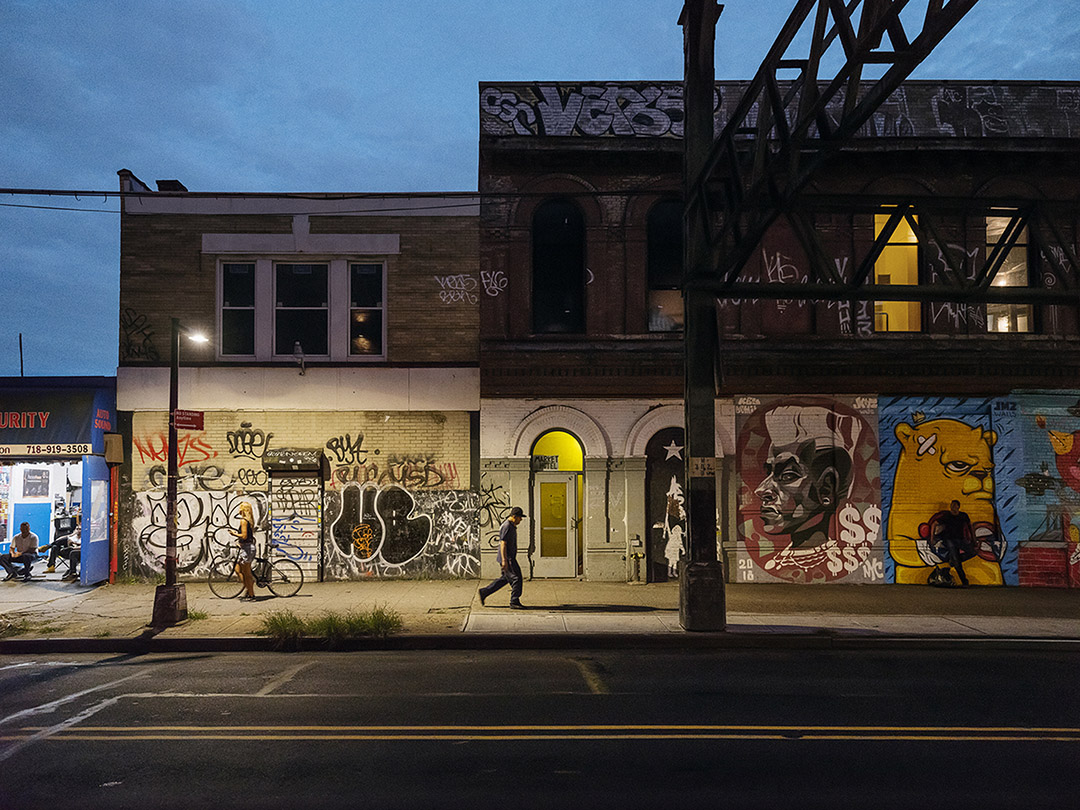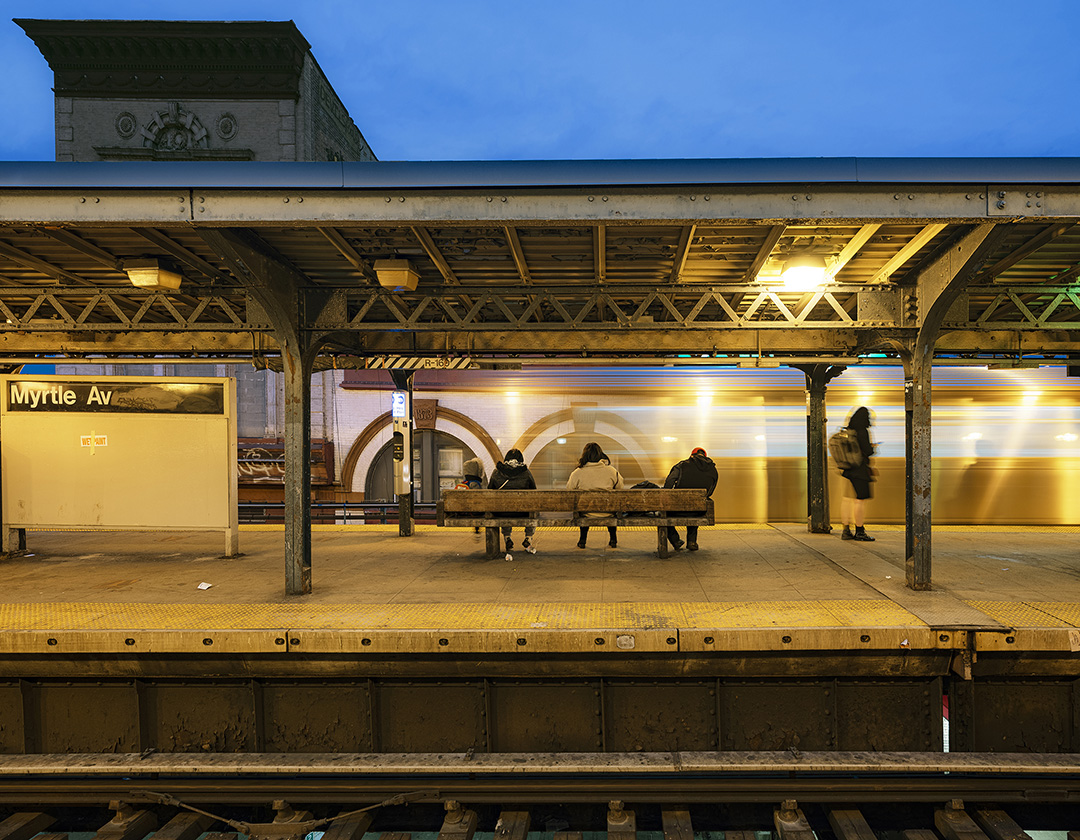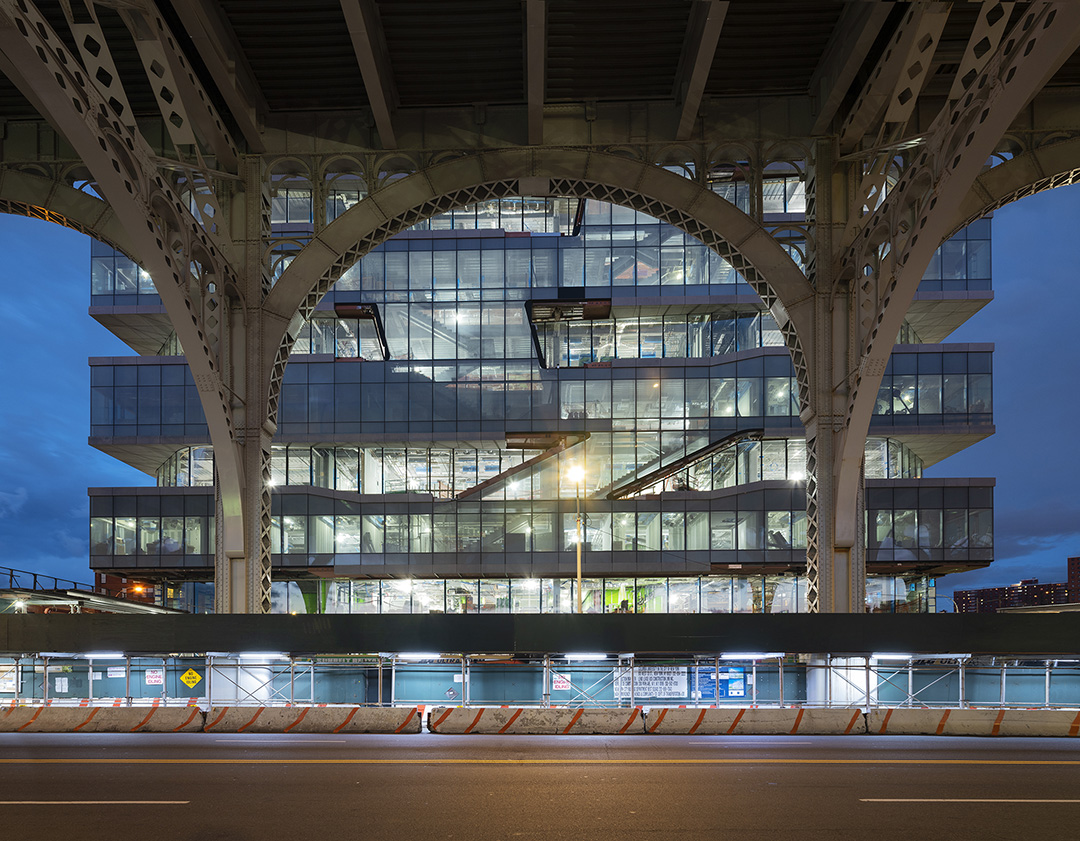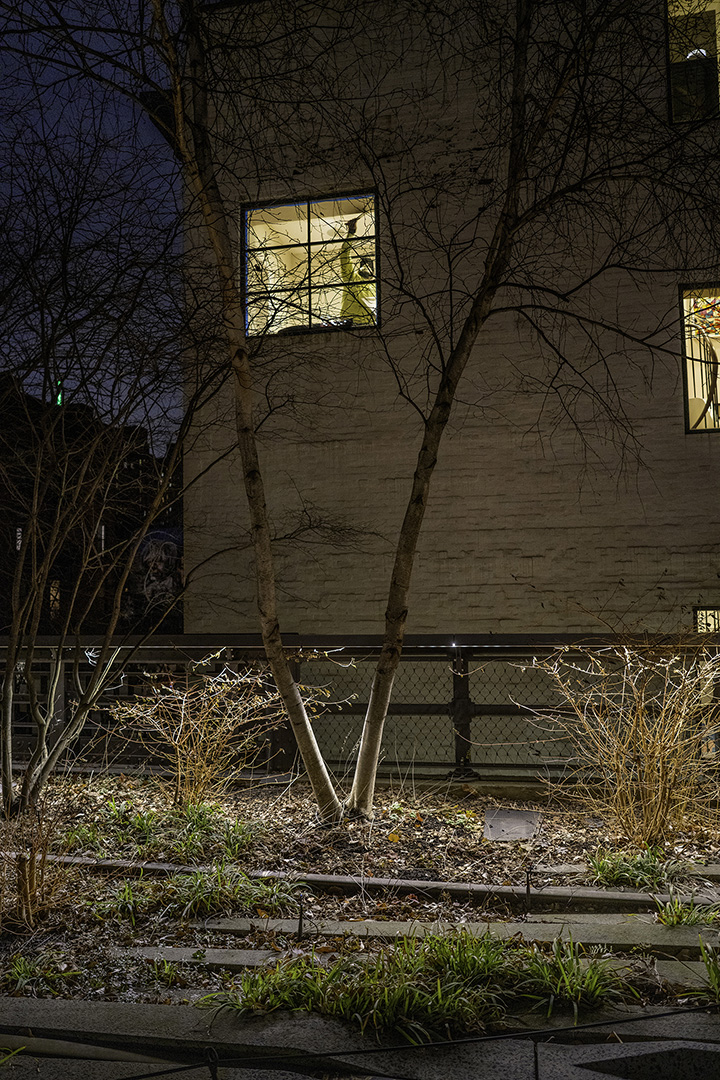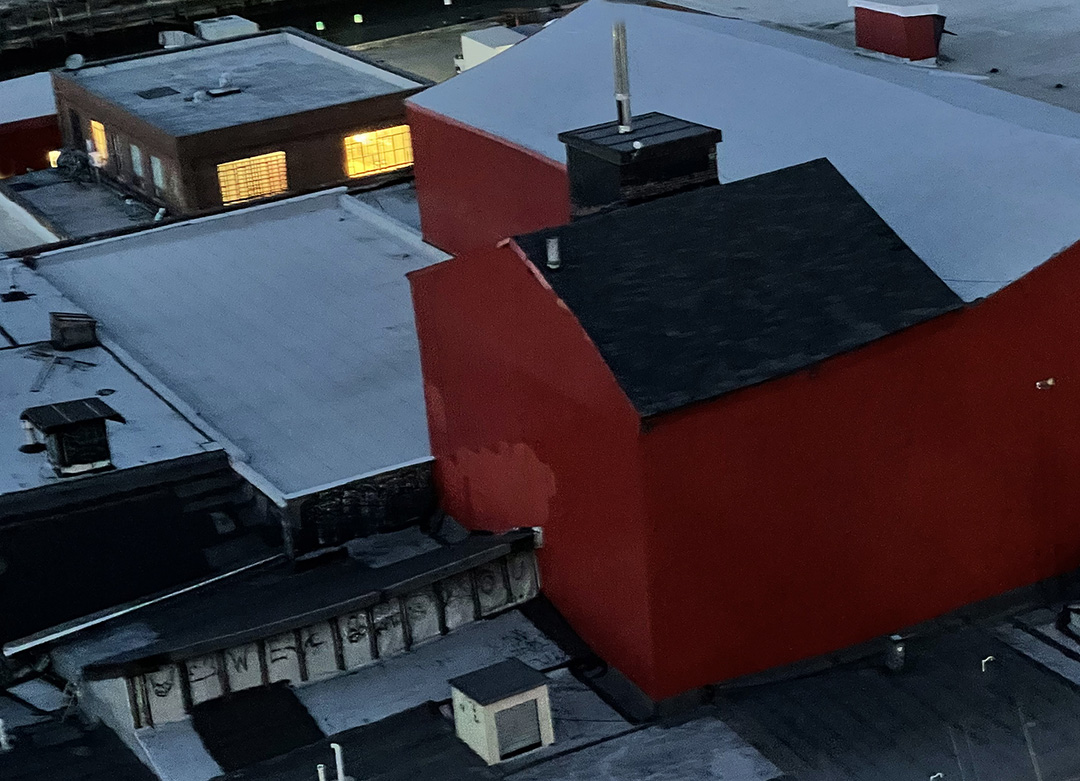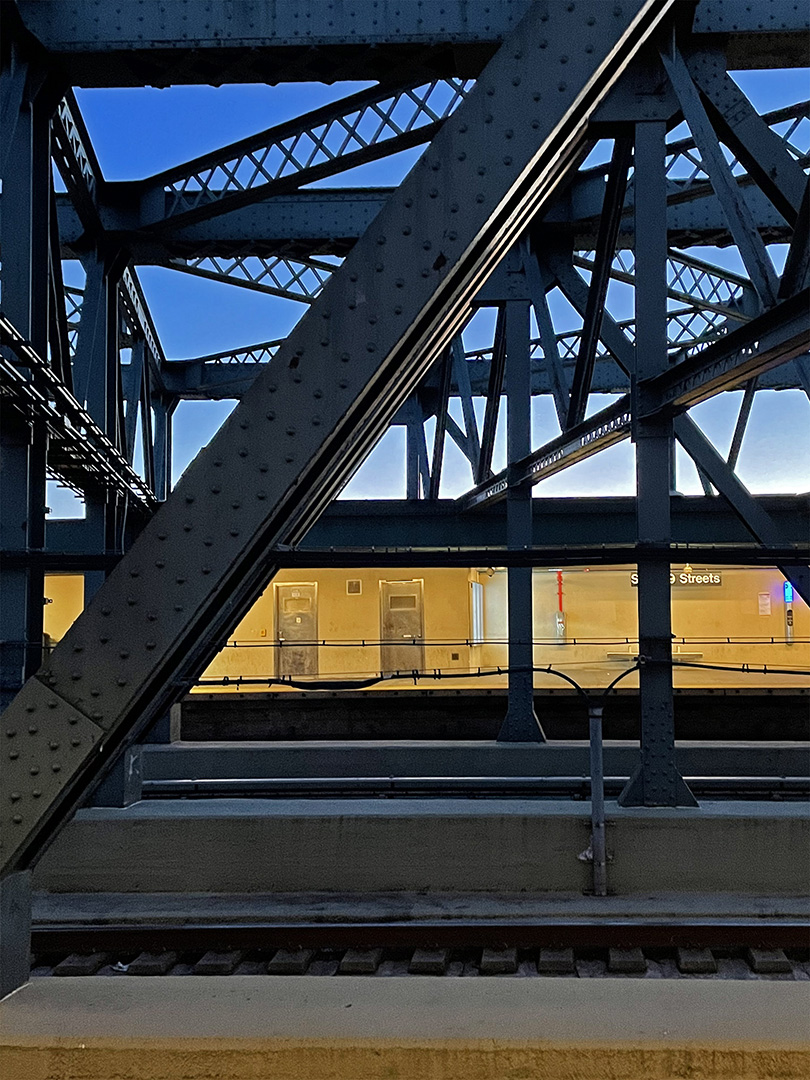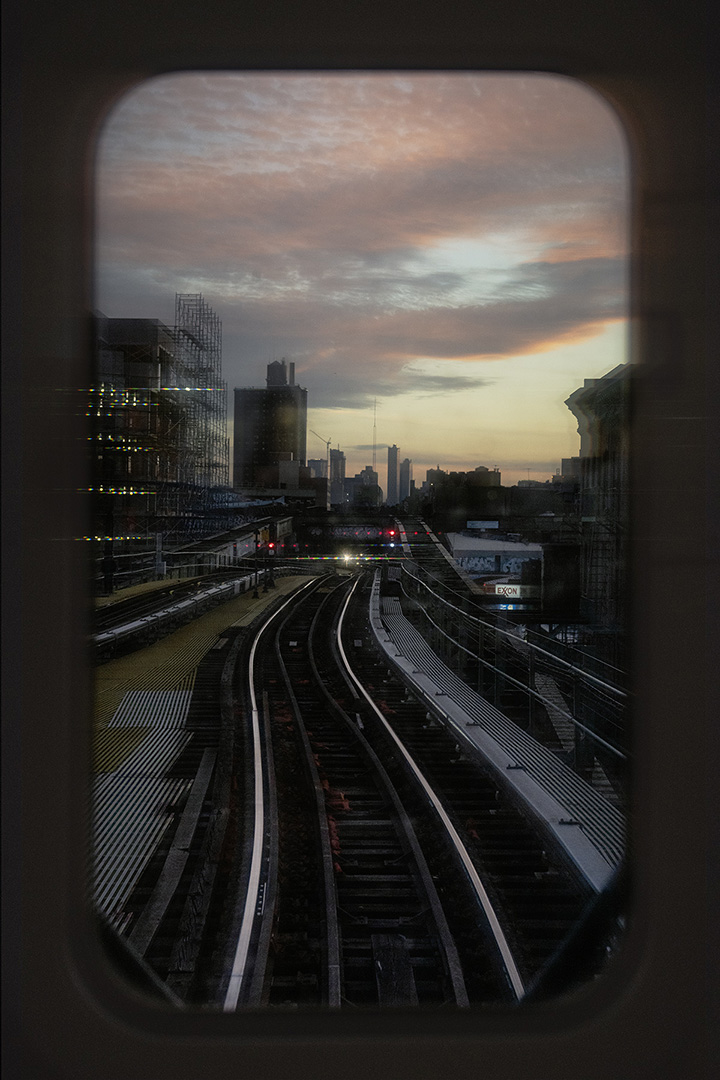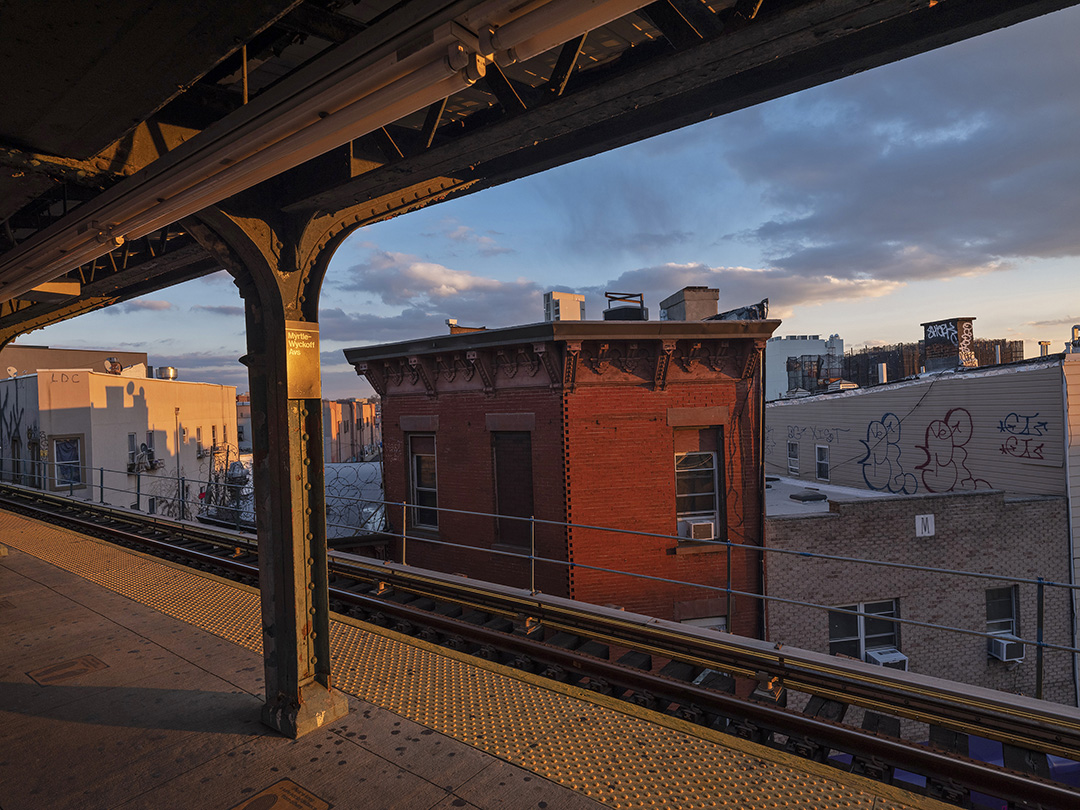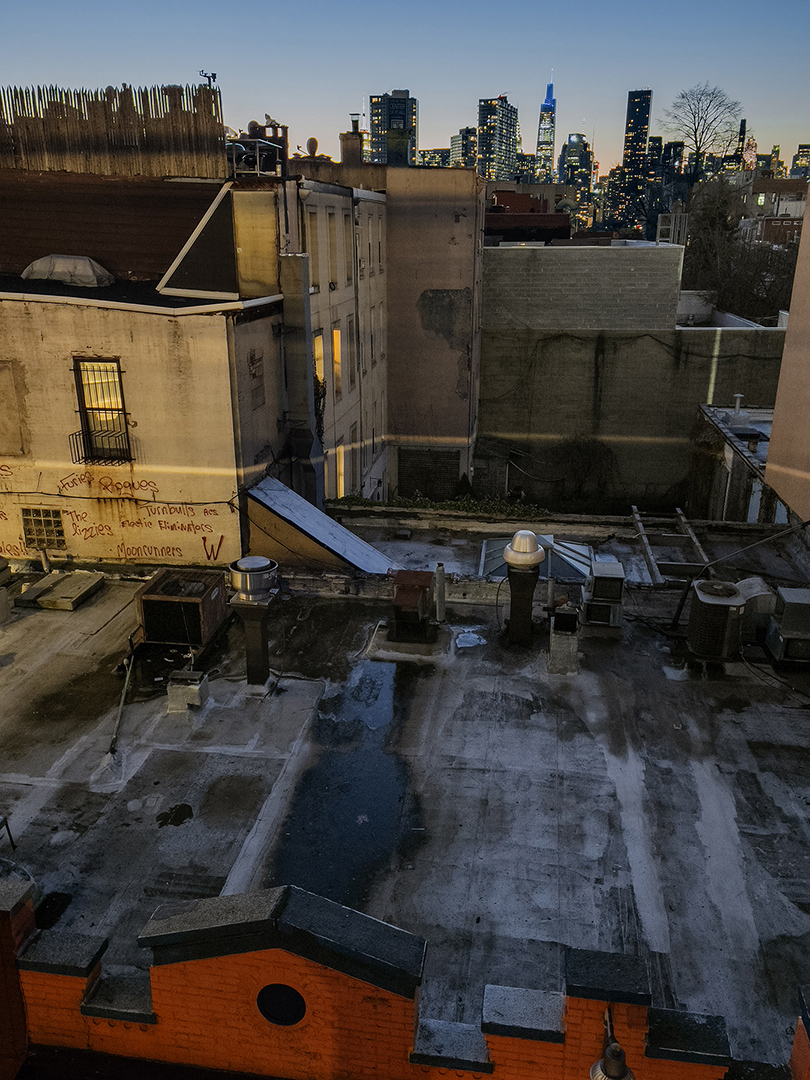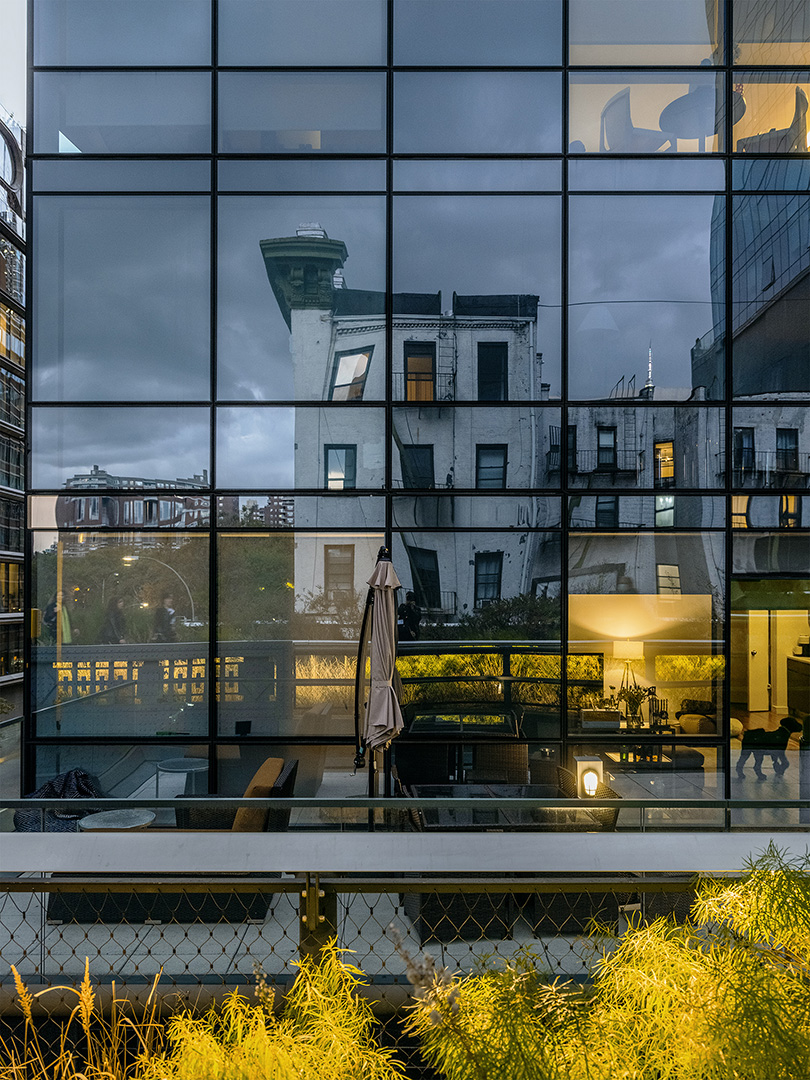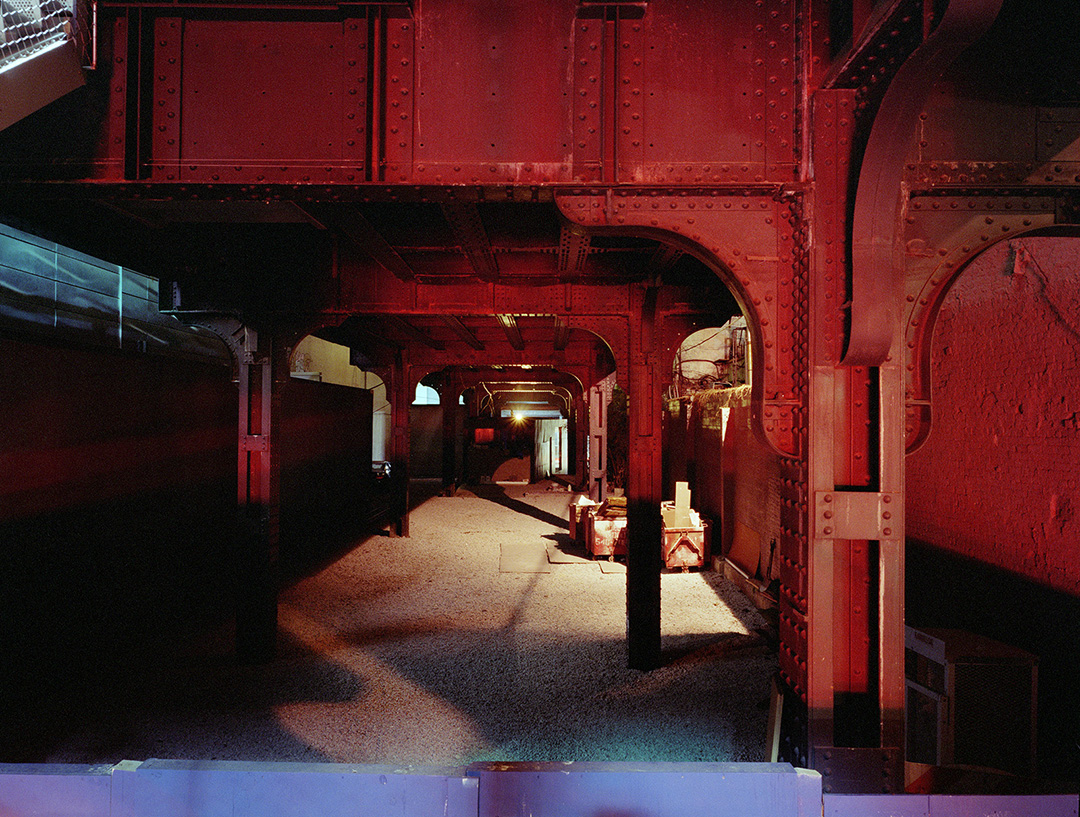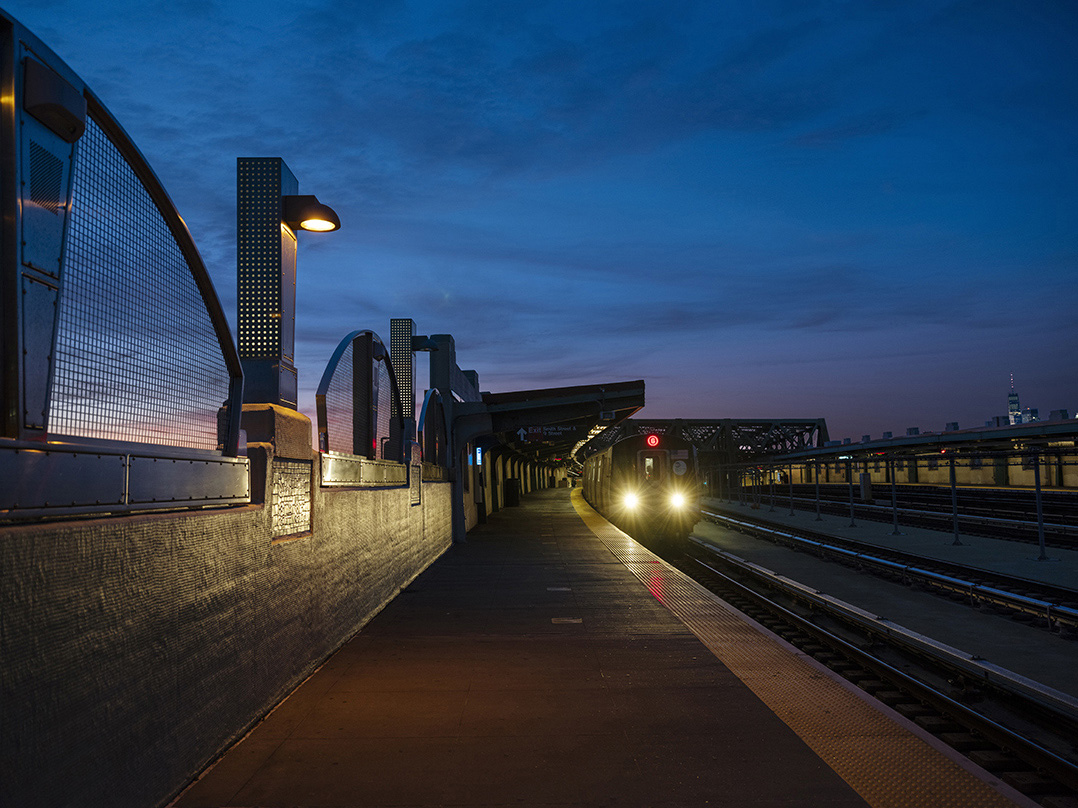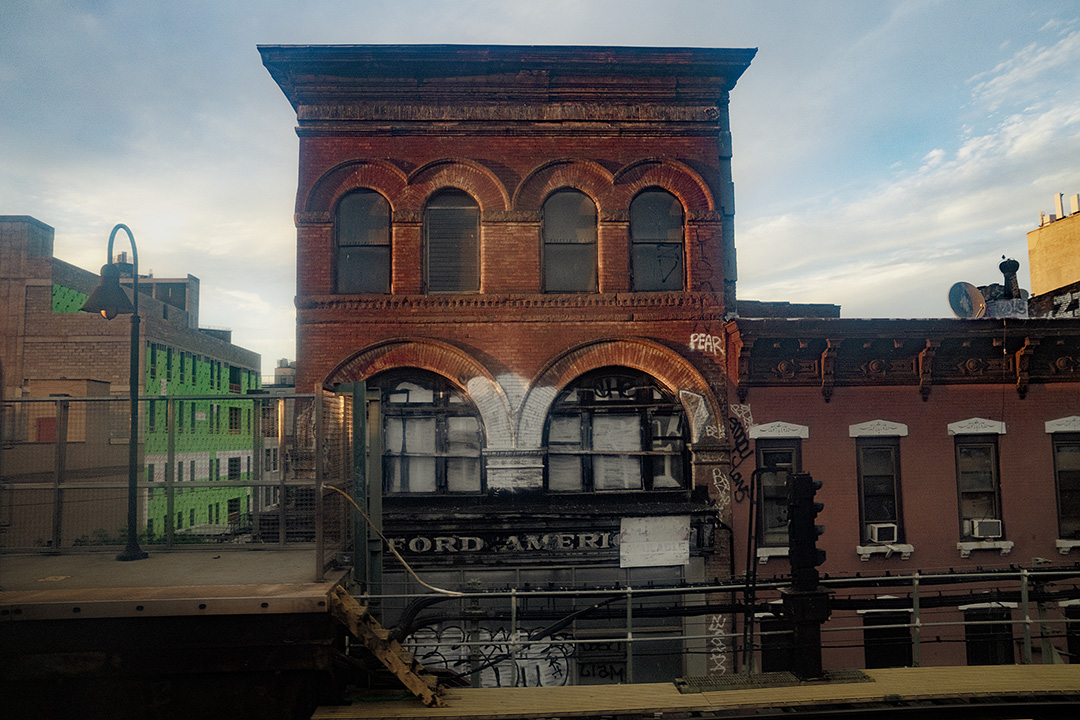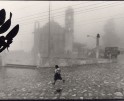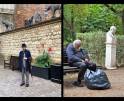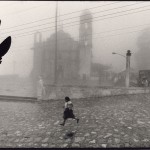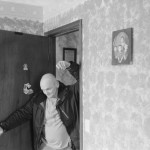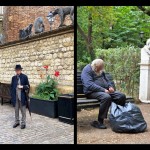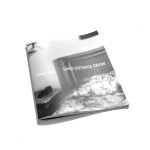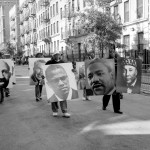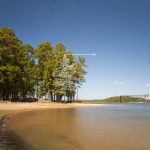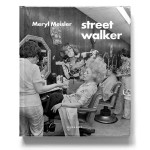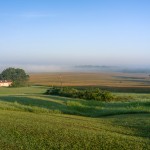Making Darkness Visible: Lynn Saville: The El at Twilight
This week, we consider work made after the sun goes down and leading that efforts is this week’s editor, Lynn Saville. Today we feature Lynn’s work
Saville describes the week ahead:
As a photographer who walks my city’s streets at twilight, I’m often alone. That is why it gives me special pleasure to appear in and present a group of my fellow night photographers under the rubric, “Making Darkness Visible.” The five of us represent a variety of approaches that suggest the rich possibilities of night photography. As you will see, we work in color or black and white, and in different environments, including cities and rural or suburban areas. Wouter Vanhees and I each wander through our chosen cities, often on deserted streets, chronicling the transitions and juxtapositions of the urban landscape. Daniel Anizon seeks to recapture forgotten unconscious images by photographing the periphery of his vision as he walks at night through the countryside. Jill Waterman documents the social rituals of New Year’s Eve in different countries, celebrations that fill the darkness with artificial light. MJ Sharp takes as a theme, what most of us implicitly believe, that the darkness of night is a precious and endangered resource. And finally, all of us hone our night vision and, in Jill Waterman’s words, rely on our “camera’s ability to record things that are beyond the capabilities of human [sight]” to make the darkness visible.
Lynn Saville is a fine-art photographer who specializes in photographing cities and rural settings at twilight and dawn, what she calls “the boundary times between night and day.” Her photographs have been published in four monographs: Acquainted with the Night (Rizzoli), Night/Shift (Monacelli), Dark City (Damiani), and Lost New York (KGP).
Saville’s work has been widely exhibited and praised. The following favorable notice of her retrospective exhibition at the Pratt Institute Photography Gallery appeared in The New Yorker: “There’s a long, rich history of New York photographers working at night, from Berenice Abbott to Joel Meyerowitz. Saville joins their ranks with these pictures …” Arthur C. Danto compared Saville’s work to Atget’s photographs of early-morning Paris: “Saville is his New York counterpart, the Atget of vanishing New York, prowling her city at the other end of the day …” In his recent book of essays, See/Saw: Looking at Photographs, Geoff Dyer wrote of Saville’s work, “The pristine silence, the lack of motion in these very still photographs, create the sense of a world that has dropped out of time—and therefore out of the cycle of transactions.”
Represented by the Yancey Richardson Gallery in New York, Saville has received many awards, including a 2022 Pollock-Krasner grant for “Elevated,” her project involving New York City’s elevated train lines. Currently, her solo public art show, “Grand Central Revealed,” a project commissioned by New York City’s MTA: ArtsDesign, is on view in Grand Central Terminal. Among her past awards are fellowships from the New York Foundation for the Arts and the New York State Council for the Arts and the Julia Margaret Cameron Award for Cityscapes.
Saville’s work is in the permanent art collections of major museums, corporations, and individuals, and many of her prints are archived in the David M. Rubenstein Rare Book and Manuscript Library, Duke University. She earned a B.A. at Duke and an M.F.A at Pratt Institute.
Follow Lynn Saville on Instagram: @lynn_saville
The El at Twilight
I have often photographed vacant city streets at twilight. Although my pictures can suggest isolation, my work is inspired by the wish to affirm the value of solitude in the midst of a populous city. I make such an affirmation by allowing the cityscape a life of its own beyond its function as a backdrop to, and abettor of, human activity. This, in turn, reflects my quest to transcend, through a meditative moment, the roles and errands assigned to me by society.
During the period of lockdown last year, I felt the need to break out of my apartment and take a road trip. The road I decided to travel was New York City’s elevated train lines (els), and in keeping with my love of twilight photography, I decided to do my traveling at dusk. As with my other twilight projects, this time of transitional and shifting light singled out basic shapes and patterns while hiding details in shadow. This emergence of pattern, combined with the fact that fewer people were riding the trains due to Covid, made it easier to appreciate the city’s dreaming its own structural dreams.
New York City’s elevated train lines stitch the city together while providing, from stations and moving trains, views of the urban terrain not available from the streets below. Seen from street level, the city is experienced as fragments, blocks and corners. But from the higher vantage point of a moving train or the platform of a station, one may see not just parts of a neighborhood but an expanse of skyline, structures on the roofs of buildings, or urban terrain. Also, els interact in fascinating ways with nearby streets and buildings. Photographs taken underneath the el convey a certain intimacy due to the ways in which the el structures enclose space. The shape of those and similar structures like the High Line and the Harlem viaduct can, in addition, serve as a framing device for nearby architecture. For this project, I have been taking photographs on, from, under, and around the city’s el structures to reveal how they influence our aesthetic perception of the urban environment and induce a meditative mood. These structures, redolent of the city’s industrial past and the mundane present of mass transit, also seem to offer the promise of a magical realm elevated above the errands of the streets
What experiences did you have in growing up that brought you to photography?
I first became aesthetically aware in Italy, where my family lived during my parents’ three sabbatical years. As a child and teenager, I came to appreciate the Italian sense of beauty not only in great works of art, but also in such everyday matters as the arrangement of shop windows.
When not traveling abroad, my family spent summers in Vermont. These vacations provided me with opportunities to observe and participate in the photography projects of my father and older brother. Later, as a student at Duke, I took my first course in photography and published several of my photographs in a university magazine.
At what point did you switch your focus to photographing after dark and what led you to that decision?
In 1971, after moving to New York to attend Pratt Institute, I photographed the city constantly. At the suggestion of Philip Perkis, then Chairman of the Photography Department, I enrolled in the department’s M.F.A. program. As a graduate student, I was lured by the challenge of rendering light and shadow when photographing theatrical performances and nocturnal street scenes.
Do you see architecture differently at night?
The shifting balance of natural and artificial light at twilight brings out basic shapes and patterns in architecture and infrastructure while hiding details in shadow. Perceiving these shapes and patterns, I feel the mystery and wonder of the city dreaming its own dreams and not serving as mere backdrop for human traffic.
Who and what have been your inspirations?
As a graduate student, I was inspired by the monoprints of Edgar Degas. I studied his rendering of light and shadow and attended ballet performances to sneak photographs from a high-up seat in the audience. When printing pictures, I experimented with ways to achieve the chiaroscuro effects I saw in Degas’ work.
I have also been influenced by the photography of Robert Adams, especially his work in Summer Nights. And I have been very moved by the way in which Edward Hopper portrays isolated individuals seemingly lost in thought, or thoughtlessness.
What is next for you?
This year I will be continuing work on my current project, “The El at Twilight,” taking pictures from and around New York City’s elevated train lines at twilight.
Posts on Lenscratch may not be reproduced without the permission of the Lenscratch staff and the photographer.
Recommended
-
Suzanne Theodora White in Conversation with Frazier KingSeptember 10th, 2025
-
Jake Corcoran in Conversation With Douglas BreaultAugust 10th, 2025
-
Student Prize 2025: Top 25 to WatchJuly 20th, 2025
-
MOPD Reviews: Paul Stein: Nothing Is RevealedJuly 2nd, 2025
-
Jordan Gale: Long Distance DrunkFebruary 13th, 2025

